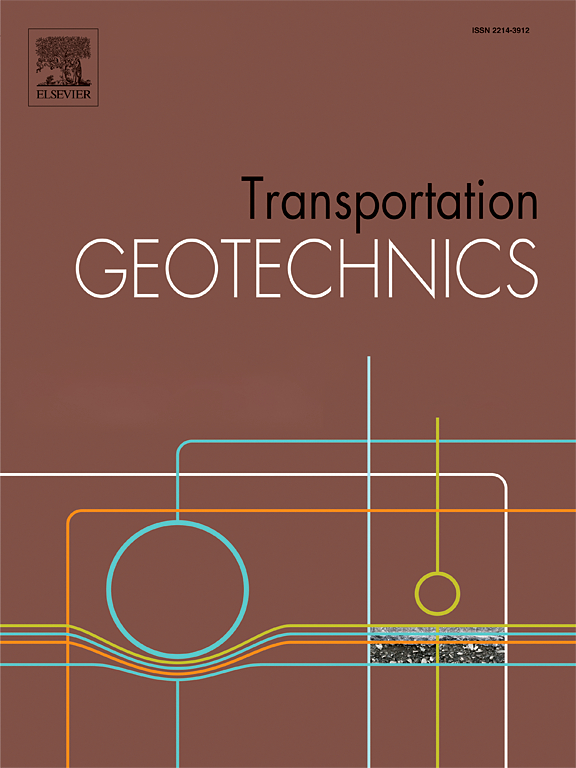Evolution of Dynamic Characteristics of Solidified Dredge Sludge during Long-Term Traffic Loading under Environmental Actions
IF 4.9
2区 工程技术
Q1 ENGINEERING, CIVIL
引用次数: 0
Abstract
This study investigates the evolution of the dynamic characteristics of a solidified dredge sludge, including the resilient modulus (MR), accumulative plastic strain (εp) and damping ratio (λ) during long-term traffic loadings considering influences of environmental actions (dry-wet, DW, and freeze–thaw, FT cycles), stress states (confining stress σc and deviator stress σd) and loading frequency (f). The experimental results indicate that the dynamic characteristics continuously change with increasing loading cycles and the influences of environmental actions, external stress state, and loading frequency are coupled. The resistance of the solidified sludge against traffic loading decreases after both DW and FT cycles, which is manifested by the decrease in the MR and the increase in the λ and εp. DW cycles induce greater reductions in the dynamic characteristics than the FT cycles. The increasing σc improves the resistance of the soil against cyclic loadings, resulting in higher MR and lower εp and λ. Besides, their rates of change with loading cycles (i.e., δMR, δεp and δλ) reduce. The MR, εp, λ, and δεp increase while the δMR and δλ decrease with the σd, indicating that the increase in the cyclic loading level contributes to the accumulation of plastic strain and energy assumption while the resultant densification effect leads to the increase in the MR and decrease in the δMR and δλ. The soil dissipates less energy when loaded under higher f, resulting in higher MR and lower εp and λ. Results reported in this paper are helpful for better understanding the dynamic responses of solidified sludge under complex loading and environmental conditions.
求助全文
约1分钟内获得全文
求助全文
来源期刊

Transportation Geotechnics
Social Sciences-Transportation
CiteScore
8.10
自引率
11.30%
发文量
194
审稿时长
51 days
期刊介绍:
Transportation Geotechnics is a journal dedicated to publishing high-quality, theoretical, and applied papers that cover all facets of geotechnics for transportation infrastructure such as roads, highways, railways, underground railways, airfields, and waterways. The journal places a special emphasis on case studies that present original work relevant to the sustainable construction of transportation infrastructure. The scope of topics it addresses includes the geotechnical properties of geomaterials for sustainable and rational design and construction, the behavior of compacted and stabilized geomaterials, the use of geosynthetics and reinforcement in constructed layers and interlayers, ground improvement and slope stability for transportation infrastructures, compaction technology and management, maintenance technology, the impact of climate, embankments for highways and high-speed trains, transition zones, dredging, underwater geotechnics for infrastructure purposes, and the modeling of multi-layered structures and supporting ground under dynamic and repeated loads.
 求助内容:
求助内容: 应助结果提醒方式:
应助结果提醒方式:


